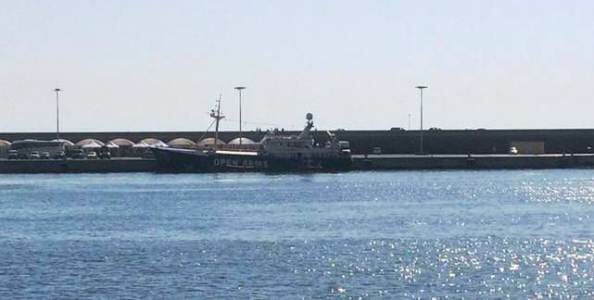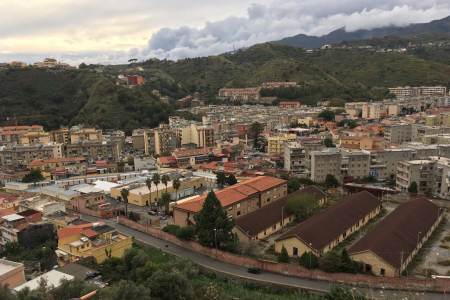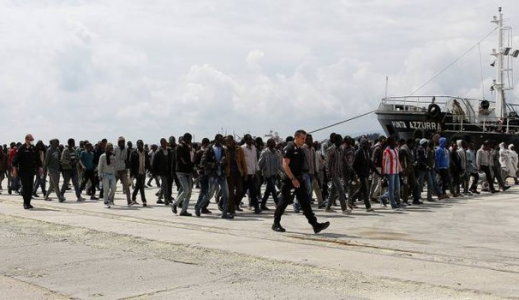Refugees at a Distance: New Victims Amid the Complete Silence of Fortress Europe
“Europe talks about migrants as refugees only when they’re at a distance, still in the countries of transit or where a war is unfolding. When we manage to cross the borders, we immediately become simply numbers, talked about as nothing but a problem.” ‘L’. is from Senegal, and just a little over 20 years old, the last five of those years spent in a journey to reach Fortress Europe, where he arrived three years ago. He tries to stay calm and composed while speaking, even if the resulting tone makes his anger and frustration clear enough, and the pain which he tries to swallow down every day.
A few sentences which describe the reality of European migration policies: identification, selection, classification, control, externalising the borders. Recently Frontex even lashed out at the humanitarian missions which save lives at sea. Those who flee have no legal method open to them, and continue to die before reaching an increasingly shielded Europe, where xenophobia, as well as both more and less visible barriers, seems to be multiplying at much faster rate than acts of solidarity.
Politicians have rushed to sign accords with ‘third countries’ in order to have even greater powers of selection over those arriving (who our economy nevertheless always finds “necessary”), externalising the borders and sending those who have managed to free themselves, for some months or years, back into the hands of dictators and torturers. There is an open road for deals with the Libyan Coast Guard, with dictatorial regimes such as that in Sudan, and other corrupt heads of state ready to sign pacts, without their people’s awareness. Human rights are becoming simply a torn piece of paper, amid the deafening silence of the media. It has deserted migrants, economic or otherwise, the deported, the trafficked and the suspected boat drivers. Not a single word on the disappearance of freedom of movement for millions of people, and only ever a few lines on the deaths which have transformed the desert and the Mediterranean into vast cemeteries. Forced migration has become a flow, the numbers remain entirely without context, the depersonalising metaphors multiply, the range of reasons for running away and the accompanying violent experiences remain invisible. Information arrives through slogans, and the responsibility of the various international, national and local actors is never made clear. It is left unknown so that it remains misunderstood, in order to maintain the current system and not to give rise to any contemplation of another one.
Bodies continue to be recouped from the sea, but people are even dying at the borders at Brenner and Ventimiglia, because even where freedom of movement is allowed to commercial goods, refugees receive only checks and security measures. The bodies of men, women and children now arrive weekly to the Sicilian ports, such as the small baby who died immediately after being born, who arrived at Augusta last Tuesday. The survivors spoke about a journey passed on the rubber boats in the worst of weathers, on a stormy sea. In some cases, such as with the last two landings at Pozzallo and Augusta, they tell of others lost at sea, new victims often with neither face nor name. The rescue operations are increasingly undertaken by merchant vessels or the Italian navy, often via the use of long tug boats, and without any primary assistance on board which could be worthy of the name. With winter now fully here, many of the 600 migrants who arrived at Augusta on December 14th on board the Aviere received new clothes only after the long pre-identification procedures, afterwards passing the night stuck in the port’s tent-city without even any blankets, nor sufficient food. Men, women, children saved by miracle, who had seen others succumb to the sea. We never have photos or reports of these scenes, but instead rhetoric about the “organisational machine enacted for welcoming them”, and the usual remarks about a state of emergency which by now shocks no one, but only leaves many people clueless about the political and economic manoeuvres which instrumentalise migrants themselves. It is the refugees who receive inhumane treatments, trapped by our laws into a state of invisibility and silence, and not Italian citizens, who instead could demand their government to respect people’s fundamental rights.
The conditions in the Hotspot of Pozzallo remain concerning, in which the survivors of the last tragic landings continue to be housed, and from which transferrals continue to the CARA of Mineo*, an emblem of all that which can be defined as business, and not a “welcoming” system. Within the CARA there are those who have just got there, those awaiting relocation, “witnesses” interrogated to arrest the suspected boat-drivers, and those who have been waiting documents for years, all bound together through the same situation of abandonment and isolation. Thousands of people living in a “ghetto” kept a good distance from the local population, making interaction and social inclusion impossible, and the consequent risk of becoming easy prey for networks of exploitation and violence, engaged only in a daily fight against alienation. “If at first I was trying to get my documents, now I’m just trying to not go mad”, one of the young men tells us, who has been there for 14 months. “It’s only a matter of luck that I live without fear of being thrown out on the street at any moment.” The CARA of Mineo has been at the centre of an investigation for more than two years, but in the media you only hear about it when some fact from the daily news involves the refugees as well. It is useless to repeat that the stories constructed out of a meeting of refugees, threats and violence are never examined enough to enable an analysis of the contexts and circumstances in which the facts of the matter developed.
It is all too easy, and comfortable, to dump the blame on the migrants, removing from collective memory the illegal activities of our own institutions. We see it even in the countless daily interactions we observe in the centres. “They [the migrants] need to calm down, they protest too often”; “They’re young, should make use of themselves”; “They should be grateful for what they’ve got”, claim so many workers. Easy things to say without recognising the imposition of asymmetrical relations, and of being part of a so-called “welcoming” system which has so obviously failed, a system which far too often is planned according to the logic of profit and hand-outs, and not of self-determination and protection. The discussion is always about “categories”, and not a single person actually has a voice.
“I’m tired but happy”, says ‘E’ however, a 16-year-old young man from Cameroon who spent three weeks in the Hotspot at Pozzallo, and was then transferred some months ago to one of the new centres for unaccompanied minors, opened in the wake of the province’s emergency. “It will be difficult to stay in Italy, even if I’m studying the language on my own, because there’s no way of going to school through this centre. To be honest I don’t understand many of the laws, and I’m very worried about what will happen in the future. It’s difficult to live in a big basement room without heating, without even a bus between here and the next village, and above all without anyone with whom I can talk about what it’s like to live here. But I’m doing alright, I’ve got this far and I know that, because of that, I can’t turn off course now.” Europe and Italy are throwing up walls, but those who have no choice will continue to try and get through them.
Lucia Borghi
Borderline Sicilia
Project “OpenEurope” – Oxfam Italia, Diaconia Valdese, Borderline Sicilia Onlus
* CARA = Centro Accoglienza Richiedenti Asilo [Asylum Seeker Reception Centre]
Translation by Richard Braude



